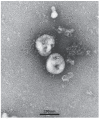The First 75 Days of Novel Coronavirus (SARS-CoV-2) Outbreak: Recent Advances, Prevention, and Treatment
- PMID: 32235575
- PMCID: PMC7177691
- DOI: 10.3390/ijerph17072323
The First 75 Days of Novel Coronavirus (SARS-CoV-2) Outbreak: Recent Advances, Prevention, and Treatment
Abstract
The recent severe acute respiratory syndrome coronavirus 2 (SARS-CoV-2, previously known as 2019-nCoV) outbreak has engulfed an unprepared world amidst a festive season. The zoonotic SARS-CoV-2, believed to have originated from infected bats, is the seventh member of enveloped RNA coronavirus. Specifically, the overall genome sequence of the SARS-CoV-2 is 96.2% identical to that of bat coronavirus termed BatCoV RaTG13. Although the current mortality rate of 2% is significantly lower than that of SARS (9.6%) and Middle East respiratory syndrome (MERS) (35%), SARS-CoV-2 is highly contagious and transmissible from human to human with an incubation period of up to 24 days. Some statistical studies have shown that, on average, one infected patient may lead to a subsequent 5.7 confirmed cases. Since the first reported case of coronavirus disease 2019 (COVID-19) caused by the SARS-CoV-2 on December 1, 2019, in Wuhan, China, there has been a total of 60,412 confirmed cases with 1370 fatalities reported in 25 different countries as of February 13, 2020. The outbreak has led to severe impacts on social health and the economy at various levels. This paper is a review of the significant, continuous global effort that was made to respond to the outbreak in the first 75 days. Although no vaccines have been discovered yet, a series of containment measures have been implemented by various governments, especially in China, in the effort to prevent further outbreak, whilst various medical treatment approaches have been used to successfully treat infected patients. On the basis of current studies, it would appear that the combined antiviral treatment has shown the highest success rate. This review aims to critically summarize the most recent advances in understanding the coronavirus, as well as the strategies in prevention and treatment.
Keywords: COVID-19; SARS-CoV-2; coronavirus; coronavirus-infected pneumonia; novel coronavirus pneumonia; zoonotic pathogen.
Conflict of interest statement
The authors declare no conflict of interest.
Figures







References
-
- Nicks B.A. 2019 Novel Coronavirus (2019-nCoV): What We Currently Know. Medscape; New York, NY, USA: 2020. p. 2.
Publication types
MeSH terms
LinkOut - more resources
Full Text Sources
Miscellaneous

